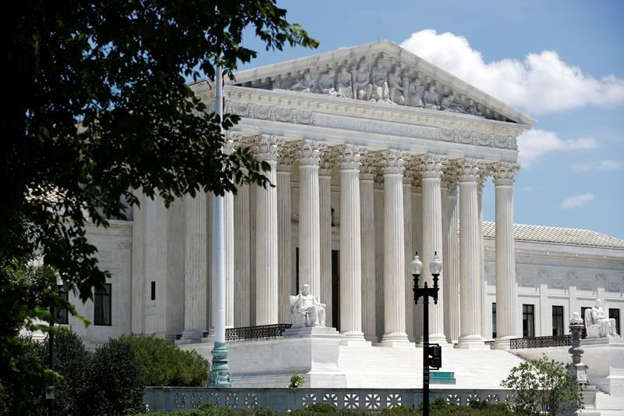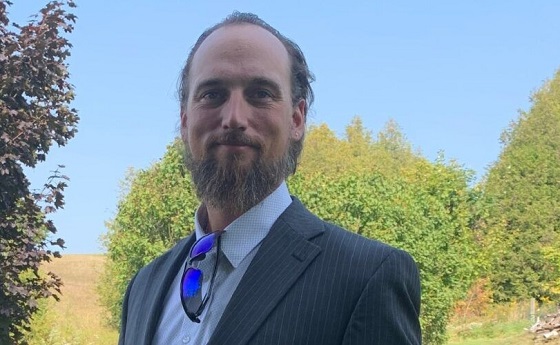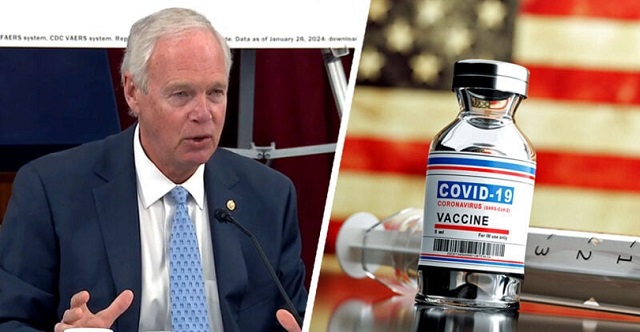COVID-19
Court Ruling on Murthy Misses Point Entirely

From the Brownstone Institute
The United States Supreme Court ruled, in a 6 to 3 decision, that the plaintiffs in the most important free speech case in decades did not have standing to ask for preliminary injunctive relief.
That is wrong.
In her majority opinion, Justice Amy Coney Barrett bent over sideways to avoid judging the case on its merits – the allegation is that various and sundry government agencies coerced private social media companies to remove posts and tweets and such they did not like – and focused instead on whether or not the plaintiffs had the right, or standing, to ask for and be granted such relief.
The plaintiffs, essentially, had their content throttled or removed from social media platforms at the behest of the government because they did not follow the government line on the pandemic response and election security, daring to question things like social distancing – even Dr. Anthony Fauci has admitted they just made that up – and how secure – or unsecure – a “vote-by-mail” election could possibly be.
The request before the court was to allow an injunction against a number of government agencies that barred improper communication with the social media platforms. The question of whether those agencies did in fact do that – essentially violating the First Amendment rights of the plaintiffs – does not appear at issue. As Justice Samuel Alito (joined in opposition to the ruling by Justices Clarence Thomas and Neil Gorsuch) said in his blistering dissent, that unquestionably happened.
The case, known as Murthy V. Missouri, involves two states and a number of private plaintiffs, all claiming that they were improperly censored – and thus damaged – by federal agencies and/or the dubious “cut out” front groups they created. Alito focused on one plaintiff – Jill Hines, who ran a Louisiana health-related (read pandemic response criticism) that was consistently degraded by Facebook after calls and pronouncements from the White House – in his dissent, noting that she unquestionably had standing (even Barrett admitted that plaintiff was closest, as it were), especially in light of the fact the government itself admitted the plaintiff had been damaged.
In today’s ruling, “The Court, however, shirks that duty and thus permits the successful campaign of coercion in this case to stand as an attractive model for future officials who want to control what the people say, hear, and think,” wrote Alito. “That is regrettable. What the officials did in this case was more subtle than the ham-handed censorship found to be unconstitutional (in a separate case), but it was no less coercive. And because of the perpetrators’ high positions, it was even more dangerous. It was blatantly unconstitutional, and the country may come to regret the Court’s failure to say so. Officials who read today’s decision…will get the message. If a coercive campaign is carried out with enough sophistication, it may get by. That is not a message this Court should send.”
Barrett wrote that, while she was not opining on the merits of the case, the plaintiffs could not show standing to receive a preliminary injunction. Such an injunction would have immediately barred government abuse going forward, but Barrett held, basically, that just because it did happen doesn’t mean it will happen again and therefore the plaintiffs are not entitled to preliminary (or prospective) relief.
As part of her reasoning, Barrett said that social media platforms did act on their own, at least on occasion, as part of their standard “content moderation” efforts and there was little or no “traceability” back to specific government individuals showing an immediate and direct correlation between a government compliant and a private company action.
Wrong.
First, in the Hines matter, even Barrett noted there was an element of traceability (that was enough for Alito to say she unquestionably had standing to seek relief and, therefore, the case should have been decided on its merits).
Second, companies like Facebook, which in the past have paid huge fines to the government, are in a very precarious position vis-a-vis federal regulation. From “Section 230” protections – a government code that limits their exposure to civil liability when deciding to drop content – to ever-growing threats of further government intervention and potential anti-trust actions, social media companies are internally incentivized to comply with government requests.
In other words, it is not at all a coincidence that a very large percentage of social media execs are “former” government employees and elected officials.
“In sum, the officials wielded potent authority. Their communications with Facebook were virtual demands,” Alito wrote. “And Facebook’s quavering responses to those demands show that it felt a strong need to yield. For these reasons, I would hold that Hines is likely to prevail on her claim that the White House coerced Facebook into censoring her speech.”
In her ruling, Barrett made other significant errors. First, she referred to the “Election Integrity Partnership” (EIP) as a “private entity,” and therefore able to make requests of social media companies.
In fact, the EIP (a group of academic “misinformation specialists”) was morphed into existence by the Department of Homeland Security, specifically its Cybersecurity and Infrastructure Security Agency, typically known as CISA. The EIP was funded by the government, many of its workers were former (though for many, ‘former’ may be a stretch) federal security agency employees, and the EIP specifically and consistently did the bidding of CISA when asked.
For Barrett to call the EIP a “private entity” shows a complete (intentional?) misunderstanding of the legal landscape and the reality of censorship-industrial complex.
The EIP and other government-sponsored cutout groups that make up the censorship-industrial complex are as independent from the government and the deep state as a foot is independent from a leg.
Barrett also claimed that similar government activities seemed to have lessened in the recent past, making the need for the going-forward injunction unnecessary.
Such a statement is impossible to prove as being true or false – especially after today – but making the assumption that it is even vaguely true, Barrett again misses the mark. If the government is censoring less now than it did two years ago it is because of the massive amount of public attention that has been drawn to the despicable practice by the press and, to be blunt, this very lawsuit.
CISA, etc. did not wake up one morning 18 months ago and say ‘Hey, we better cool it on this” because they suddenly realized they were most likely violating the Constitution; they did so because of the public – and Congressional – pressure.
And now with at least the legal pressure lessened (and an election coming up), to believe that the activities will not increase is naïve to the point of childish – that’s why this future, going forward, prospective injunction was so important.
That didn’t stop the Biden administration from crowing and, presumably, figuring out to ramp up the program for November.
Critics of the decision were loud and voluminous. Appearing on Fox News, legal commentator Jonathan Turley said that “standing issues” are often “used to block meritorious claims” and that the government’s “censorship by surrogate makes a mockery of the First Amendment.”
“The Supreme Court’s decision,” said White House press secretary Karine Jean-Pierre, “helps ensure the Biden administration can continue our important work with technology companies to protect the safety and security of the American people.”
Matt Taibbi, one of the reporters behind the outing of the “Twitter files,” noted that KJP’s statement is astonishingly egregious, but also very telling. She essentially admits government censorship is occurring and claims it is good:
That “important work,” of course, includes White House officials sending emails to companies like Facebook, with notes saying things like ‘Wanted to flag the below tweet and am wondering if we can get moving on having it removed ASAP.’ The Supreme Court sidestepped ruling on the constitutionality of this kind of behavior in the Murthy v. Missouri case with one blunt sentence: “Neither the individual nor the state plaintiffs have established Article III standing to seek an injunction against any defendant.”
“The great War on Terror cop-out, standing — which killed cases like Clapper v. Amnesty International and ACLU v. NSA — reared its head again. In the last two decades, we’ve gotten used to the problem of legal challenges to new government programs being shot down precisely because their secret nature makes collecting evidence or showing standing or injury difficult, and Murthy proved no different.”
Dr. Jay Bhattacharya, an internationally recognized Stanford medical professor, is one of the private plaintiffs in the suit. Bhattacharya is one of the co-authors of the Great Barrington Declaration, which called for a more targeted and rational response to the pandemic response. When it comes to standing, he points directly to an email from then-National Institutes of Health Chief (Tony Fauci’s sort-of boss) Francis Collins, calling on his fellow government employees to engage in a “devastating takedown” of Bhattacharya and the Declaration itself.
Barrett wrote that “Enjoining the Government defendants, therefore, is unlikely to affect the platforms’ content-moderation decisions,” an opinion Bhattacharya was having none of.
“Unlikely to continue to be damaged?” asked Bhattacharya. “How do we know that? And now because of this ruling we have no legal protection from it happening. The court ruled that you can censor until you get caught and even then there will be no penalty.”
Because of the focus on standing, Bhattacharya likened today’s ruling to giving the go-ahead to “broadly censor ideas” as long as you make sure not to traceably censor a specific individual.
A disappointed Bhattacharya has hopes for the future – the case was, again, not decided on its merits and is simply remanded without the injunction back to federal district court in Louisiana – but thinks electeds need to pass laws to stop the censorship.
“At this point, Congress has to act and this needs to be an election issue,” Bhattacharya said.
John Vecchione, New Civil Liberties Alliance Senior Litigation Counsel and the lawyer for four of the five private individuals (including Hines and Bhattacharya) said today’s ruling was “not in accordance with the facts” of the situation.
“There is a level of unreality about this opinion,” Said Vecchione, adding that it reads like a “roadmap for government censors.”
While some in the media have tried to identify this case as having “right-wing” support, Vecchione noted it was originally filed while Donald Trump was president and therefore goes far beyond partisan politics to the heart of the rights of American citizens.
The suit, as noted, goes back to district court and Vecchione says they will continue to gather facts and depositions and even more specific instances of “traceability” – he says they already have enough, but Barrett did not agree – and keep working it through the courts. He said he expects to be back at the Supreme Court sometime in – hopefully – the near future.
“Meanwhile, any government agency, any administration can censor any message they don’t like,” Vecchione said.
And no matter a person’s politics, that is just plain wrong.
Or as Justice Alito wrote:
“For months, high-ranking Government officials placed unrelenting pressure on Facebook to suppress Americans’ free speech. Because the Court unjustifiably refuses to address this serious threat to the First Amendment, I respectfully dissent.”
Republished from the author’s Substack
COVID-19
Freedom Convoy protester appeals after judge dismissed challenge to frozen bank accounts

From LifeSiteNews
Protestor Evan Blackman’s legal team argues Trudeau’s Emergencies Act-based bank account freezes were punitive state action tied directly to protest participation.
A Freedom Convoy protester whose bank accounts were frozen by the Canadian government says a judge erred after his ruling did not consider the fact that the funds were frozen under the Emergencies Act, as grounds for a stay of proceedings.
In a press release sent out earlier this week, the Justice Centre for Constitutional Freedoms (JCCF) said that Freedom Convoy protestor Evan Blackman will challenge a court ruling in his criminal case via an appeal with the Ontario Superior Court of Justice.
“This case raises serious questions about how peaceful protest is treated in Canada and about the lasting consequences of the federal government’s unlawful use of the Emergencies Act,” noted constitutional lawyer Chris Fleury. “The freezing of protestors’ bank accounts was part of a coordinated effort to suppress dissent, and courts ought to be willing to scrutinize that conduct.”
Blackman was arrested on February 18, 2022, during the police crackdown on Freedom Convoy protests against COVID restrictions, which was authorized by the Emergencies Act (EA). The EA was put in place by former Prime Minister Justin Trudeau’s Liberal government, which claimed the protests were violent, despite no evidence that this was the case.
Blackman’s three bank accounts with TD Bank were frozen due to his participation in the Freedom Convoy, following a directive ordered by Trudeau.
As reported by LifeSiteNews, in November of this year, Blackman was convicted at his retrial even though he had been acquitted at his original trial. In 2023, Blackman’s “mischief” and “obstructing police” charges were dismissed by a judge due to lack of evidence and the “poor memory of a cop regarding key details of the alleged criminal offences.”
His retrial resulted in Blackman getting a conditional discharge along with 12 months’ probation and 122 hours of community service, along with a $200 victim fine surcharge.
After this, Blackman’s application for a stay of proceedings was dismissed by the court. He had hoped to have his stay of proceedings, under section 24(1) of the Charter of Rights and Freedoms, allowed. However, the judge ruled that the freezing of his bank accounts was legally not related to his arrest, and because of this, the stay of proceedings lacked standing.
The JCCF disagreed with this ruling, noting, it “stands in contrast to a Federal Court decision finding that the government’s invocation of the Emergencies Act was unreasonable and violated Canadians’ Charter rights, including those targeted by the financial measures used against Freedom Convoy protestors.”
As of press time, a hearing date has not been scheduled.
In 2024, Federal Court Justice Richard Mosley ruled that Trudeau was “not justified” in invoking the Emergencies Act.
In early 2022, the Freedom Convoy saw thousands of Canadians from coast to coast come to Ottawa to demand an end to COVID mandates in all forms. Despite the peaceful nature of the protest, Trudeau’s federal government enacted the EA in mid-February.
After the protesters were cleared out, which was achieved through the freezing of bank accounts of those involved without a court order as well as the physical removal and arrest of demonstrators, Trudeau revoked the EA on February 23, 2022.
COVID-19
Senator Demands Docs After ‘Blockbuster’ FDA Memo Links Child Deaths To COVID Vaccine


From the Daily Caller News Foundation
By Emily Kopp
The letter, exclusively shared with the Daily Caller News Foundation, seeks more details about those deaths and the passive U.S. vaccine safety surveillance system and complacent Food and Drug Administration (FDA) bureaucracy under the Biden administration that delayed their reporting for years.
“Nobody wanted to admit that these things were causing death. This is absolutely a case of willful ignorance,” Johnson said in an interview with the DCNF.
As a nonprofit, we are dependent on the generosity of our readers.
Please consider making a small donation of any amount here.
Thank you!
The letter requests from the Department of Health and Human Services (HHS) “all records referring or relating to the review of the 96 reports of death following a COVID-19 vaccine … including but not limited to, any memorandum or report created following that review and the data underlying the reports.”
“I am grateful that we now have individuals at our federal health agencies who care about vaccine safety and efficacy. I am, however, disappointed that despite having subpoenaed HHS for the type of data and information described in Dr. Prasad’s memo, it does not appear to have been provided to my office,” the letter reads.
HHS did not immediately respond to a request for comment.
“This is a profound revelation. For the first time, the US FDA will acknowledge that COVID-19 vaccines have killed American children. Healthy young children who faced tremendously low risk of death were coerced, at the behest of the Biden administration, via school and work mandates, to receive a vaccine that could result in death. In many cases, such mandates were harmful. It is difficult to read cases where kids aged 7 to 16 may be dead as a result of covid vaccines,” Prasad wrote. “There is no doubt that without this FDA commissioner [Marty Makary], we would not have performed this investigation and identified this safety concern. This fact also demands serious introspection and reform.”
“One reason I’m writing this letter is that this memo needs much greater attention. This should be a blockbuster,” the Wisconsin senator told the DCNF.
Johnson, who has investigated the issue of COVID vaccine-linked adverse events since June 2021, also seeks more clarity about why FDA only examined a fraction of total reports to the Vaccine Adverse Event Reporting System (VAERS). He noted that the 96 deaths scrutinized by FDA staff in its investigation represents a sliver of the raw VAERS reports of 9,299 deaths worldwide within two days of vaccination.
Distinguishing which VAERS reports indicate genuine fatal side effects and which represent mere coincidences requires autopsy reports, which regulators and physicians often do not request because of a ideological reluctance to acknowledge that vaccines can carry risks, Johnson told the DCNF. Johnson said he has spoken to families who suspected a vaccine injury but struggled to obtain autopsies.
“With some of these officials at federal health agencies and within the medical establishment, vaccines are religion. The do not want to muddy the water with facts,” he said.
Johnson’s letter notes that Prasad acknowledged a culture at FDA “where vaccines are exculpated rather than indicted in cases of ambiguity,” and that the true number of deaths is likely higher.
Johnson has as chair of the Senate Permanent Subcommittee on Investigations investigated the Biden administration’s headlong expansion of COVID vaccines and booster shots to healthy young adults and children.
His committee uncovered internal federal documents showing the Centers for Disease Control and Prevention never updated its vaccine surveillance tool “V-Safe” to include cardiac symptoms, despite naming myocarditis as a potential adverse event by October 2020, per a May report. The investigation also found that top officials at FDA obstructed a warning to pediatricians and other providers about the risk of myocarditis after the May 2021 authorization of the Pfizer vaccine for 12 to 15-year-olds, months after Israeli health officials first detected the safety signal in February 2021.
Johnson’s letter highlights missing safety studies that the drugmakers never conducted.
Under the Biden administration, the FDA waived the responsibility of the drugmakers to conduct post-market studies that they had pledged to regulators, scientific advisors on the FDA Vaccines and Related Products Advisory Committee, and the public that they would complete. These uncompleted studies include promised research into subclinical myocarditis, undocumented rates of heart inflammation without obvious symptoms, Prasad’s memo states.
Johnson’s letter reveals the committee has not received any records from HHS about the liability shield for COVID-19 vaccines.
A public health media personality reported on Dec. 11 that FDA staff had downgraded the certainty with which it can attribute some the deaths to the vaccine in the weeks since Prasad received their top line results — echoing prior leaks from career officials aimed at undermining FDA’s new bosses.
Center for Drug Evaluation and Research Acting Director Tracy Beth Hoeg first concluded in a separate analysis that there were in fact deaths in children in the summer, but career staff leaked the results to reporters who “portrayed the incident as Dr. Hoeg attempting to create a false fear regarding vaccines” soon after, per Prasad’s memo.
Johnson’s letter seeks documentation of Hoeg’s meeting, including “a list of all attendees.”
-

 Agriculture1 day ago
Agriculture1 day agoWhy is Canada paying for dairy ‘losses’ during a boom?
-

 Frontier Centre for Public Policy2 days ago
Frontier Centre for Public Policy2 days agoCanada Lets Child-Porn Offenders Off Easy While Targeting Bible Believers
-

 Business1 day ago
Business1 day agoCanada Hits the Brakes on Population
-

 Agriculture1 day ago
Agriculture1 day agoCanadians should thank Trump for targeting supply management
-

 Business2 days ago
Business2 days agoWhite House declares inflation era OVER after shock report
-

 Daily Caller1 day ago
Daily Caller1 day ago‘Almost Sounds Made Up’: Jeffrey Epstein Was Bill Clinton Plus-One At Moroccan King’s Wedding, Per Report
-

 COVID-192 days ago
COVID-192 days agoChina Retaliates Against Missouri With $50 Billion Lawsuit In Escalating Covid Battle
-

 COVID-192 days ago
COVID-192 days agoSenator Demands Docs After ‘Blockbuster’ FDA Memo Links Child Deaths To COVID Vaccine






